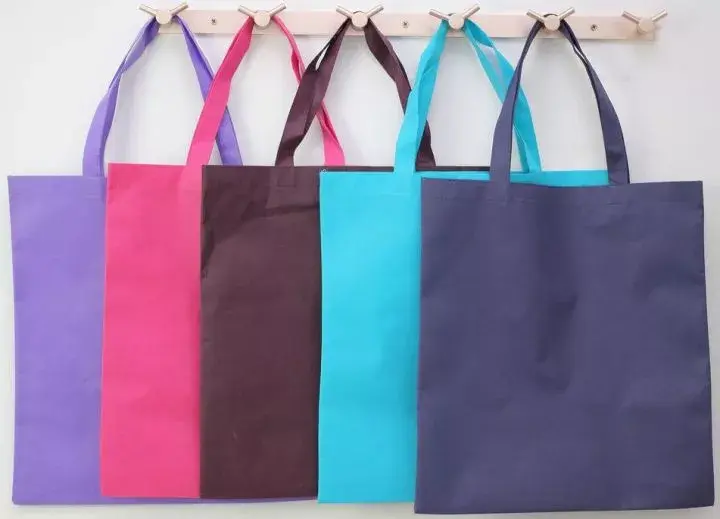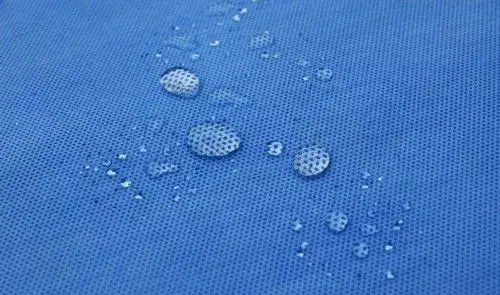Understanding Nonwoven Fabrics: Key Facts You Need to Know
Date: 2025-02-18 Categories: Company New、News Views: 2970
Understanding Nonwoven Fabrics: Key Facts You Need to Know
As a manufacturer specializing in the production of high-quality diapers and hygiene products, understanding the materials that make up these items is crucial. Nonwoven fabric, or nonwoven textile, is one such material that plays an important role in the production of diapers, sanitary pads, and other hygiene-related products. Below, we explore what nonwoven fabrics are, their advantages, and their types, to help you make informed decisions for your business.
What is Nonwoven Fabric?

Nonwoven fabric is a type of textile material that is not made by weaving or knitting fibers together. Instead, it uses a process of bonding short fibers or filaments through methods such as mechanical, thermal, or chemical bonding to form a fabric. This results in a fabric that is strong, durable, and versatile, with applications ranging from medical use to daily hygiene products.
In simple terms, unlike traditional woven fabrics, nonwoven fabrics are created by directly bonding fibers using physical or chemical methods. Therefore, when handling nonwoven products, such as diapers, you may notice there are no individual threads that can be pulled out.
Key Features of Nonwoven Fabric
- Lightweight Nonwoven fabrics are typically made from polypropylene (PP) resin, which has a density of only 0.9, making it about 60% lighter than cotton. This material is fluffy and feels soft to the touch.
- Softness The fine fibers used in nonwoven fabrics (2-3D) are bonded through a light heat fusion process. This gives the final product a moderate softness and comfortable feel.
- Water-Repellent and Breathable Polypropylene fibers do not absorb water, making them water-repellent. These fibers are also highly porous, which improves breathability, keeping products dry and easy to wash.
- Non-Toxic and Skin-Friendly Nonwoven fabrics are made using FDA-approved, food-grade materials, free from harmful chemicals. They are stable, odorless, non-toxic, and gentle on the skin.
- Chemical Resistance Polypropylene is chemically inert, meaning it does not attract pests and can resist the corrosion of bacteria or insects in liquid environments.
- Antibacterial Properties The fabric is water-resistant, preventing mold and bacterial growth, and remains free from pests.
- Durability Nonwoven fabrics made from polypropylene fibers are strong, with balanced strength in both horizontal and vertical directions, unlike typical short-fiber products.
- Environmentally Friendly Most nonwoven fabrics are made from polypropylene, which is much easier to degrade compared to polyethylene, the material used for plastic bags. While polyethylene can take up to 300 years to break down, polypropylene degrades within 90 days. Additionally, nonwoven fabric shopping bags can be reused more than 10 times, and they only have 10% of the environmental impact of plastic bags.
Drawbacks of Nonwoven Fabrics
- Lower Durability Compared to woven fabrics, nonwoven fabrics are generally less durable.
- Non-Washable Unlike traditional fabrics, nonwoven materials cannot be washed in the same manner.
- Directional Weakness Since the fibers in nonwoven fabric are aligned in specific directions, the material may tear along perpendicular angles, limiting its strength in certain directions.
The Basics of Nonwoven Fabric Production
Nonwoven fabric production involves several key stages:
- Fiber Preparation
- Web Formation
- Bonding Process
- Post-Treatment
These stages use various methods to bind fibers together, depending on the specific type of nonwoven fabric being produced.

Types of Nonwoven Fabrics
- Spunlace Nonwoven Fabric Spunlace fabric is made by spraying high-pressure water jets onto layers of fibers, entangling them without affecting their properties. This method results in fabrics with high absorbency and softness. It’s commonly used for medical drapes, surgical gowns, and wipes.
- Heat-Pressed Nonwoven Fabric This type of fabric is formed by adding heat-sensitive adhesives to the fibers and fusing them under heat. It is commonly used for diapers and sanitary napkin liners.
- Air-Laid Nonwoven Fabric Air-laid fabric uses air currents to collect wood pulp fibers into a mat, which is then bonded together. This type of fabric is known for its high absorbency and strength, ideal for hygiene products.
- Wet-Laid Nonwoven Fabric Wet-laid fabrics are made by suspending fibers in water and allowing them to settle into a fabric structure. It’s commonly used for products that require a high level of moisture resistance.
- Spunbond Nonwoven Fabric In spunbond production, continuous filaments are spun, stretched, and laid into a fabric sheet. It’s widely used in agriculture, construction, and hygiene products due to its durability and strength.
- Meltblown Nonwoven Fabric Meltblown fabric is produced by blowing hot air through melted polymer to form fine fibers. It is primarily used for filtration products, medical masks, and wipes.
- Needle-Punched Nonwoven Fabric Needle-punched fabrics are made by mechanically entangling fibers using barbed needles. This fabric is often used for products that require robust strength and filtration capabilities.
Conclusion
Nonwoven fabrics are an essential material in the production of diapers and hygiene products. They offer many benefits, including lightweight, softness, breathability, and environmental friendliness, making them ideal for products that need to be safe, comfortable, and durable. Understanding these fabrics’ types and features can help manufacturers like Quanzhou Sk Care Co., Ltd. choose the right materials for their products, ensuring both quality and sustainability.














